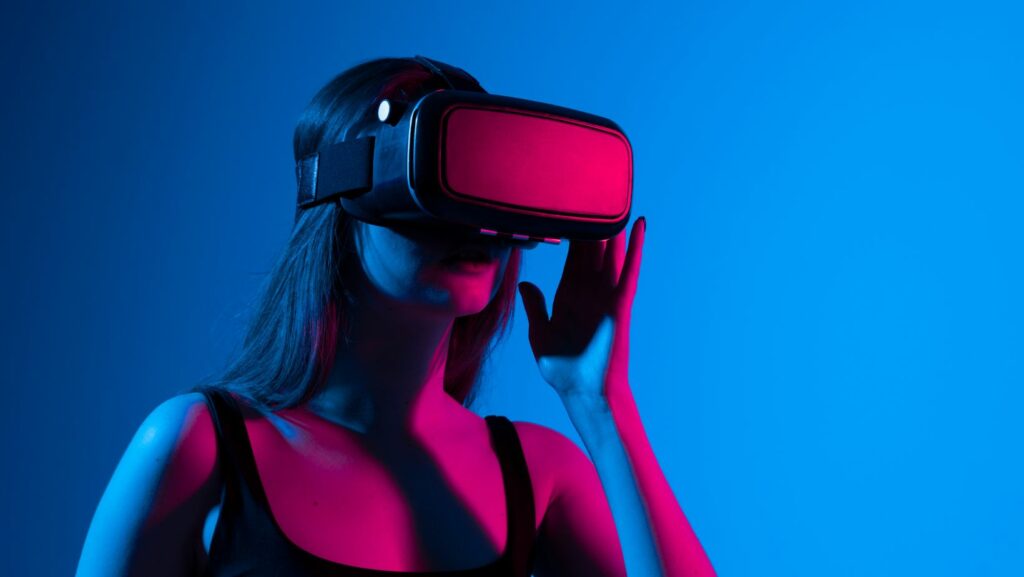Key Takeaways
- Digital Video Innovation is Transformative: Technologies like augmented reality, 360-degree videos, and AI-driven content creation are reshaping engagement and storytelling in digital media.
- Augmented Reality Enhances Interaction: AR significantly improves viewer experiences by overlaying digital elements onto real-world environments, allowing brands to engage customers in new ways.
- AI Streamlines Content Production: Artificial intelligence automates various stages of video production, leading to more efficient and personalized viewer experiences through tailored content recommendations.
- User-Generated Content is Key: The rise of user-generated content allows brands to showcase authentic experiences, enhancing credibility and fostering deeper audience connections.
- Audience Preferences are Shifting: There is a growing demand for shorter, mobile-friendly video content as consumers increasingly favor engaging materials that capture attention quickly.
- Streaming Platforms Influence Consumption: Major streaming services are shaping video preferences by offering vast libraries and unique content, fostering community engagement through real-time interactions.
In a world where attention spans are shrinking, digital video innovation has emerged as a game changer. From breathtaking visuals to interactive storytelling, the evolution of video technology is reshaping how brands connect with their audiences. As platforms evolve and consumer preferences shift, staying ahead in this dynamic landscape is crucial.
Innovations like augmented reality, 360-degree videos, and AI-driven content creation are not just trends; they’re redefining the very essence of digital engagement. Businesses that harness these advancements can create immersive experiences that captivate and retain viewers. Understanding these developments is key for anyone looking to thrive in the fast-paced digital realm.
Digital Video Innovation
Digital video innovation encompasses a range of advanced technologies that enhance viewer engagement and transform storytelling. These innovations include augmented reality, 360-degree videos, and AI-driven content creation, each playing a crucial role in shaping the future of digital media.
Augmented Reality (AR)
AR overlays digital elements onto the real world, significantly enhancing viewer interactions. Brands integrate AR into marketing strategies to create immersive experiences. For example, companies like IKEA use AR apps to allow customers to visualize furniture in their homes before purchasing.
360-Degree Videos
360-degree videos provide an immersive viewing experience by allowing viewers to explore a scene from multiple angles. This format is particularly effective for travel, entertainment, and virtual tours. Many organizations utilize this technology to showcase venues or events, enabling audiences to feel present without being physically there.
AI-Driven Content Creation
AI-driven content creation automates the production process, making it more efficient and personalized. Algorithms analyze viewer preferences, generating tailored content that aligns with audience interests. Leading platforms harness AI to recommend videos, improving viewer retention by serving relevant content.
Importance of Digital Video Innovation
Understanding these innovations is vital for businesses aiming to elevate their digital marketing efforts. By adopting advanced video formats, organizations can capture audience attention, foster deeper connections, and create memorable experiences. Embracing digital video innovation positions brands for success in an increasingly competitive digital landscape.
Key Technologies Driving Innovation
Digital video innovation integrates several key technologies that enhance content production and viewer engagement. The following technologies play vital roles in transforming digital storytelling.

Artificial Intelligence in Video Production
Artificial intelligence (AI) streamlines video production by automating tasks such as editing, scriptwriting, and audience analysis. AI algorithms analyze viewer data to personalize content recommendations, ensuring relevant experiences. Tools like Adobe Premiere Pro utilize AI to enhance video editing efficiency. Additionally, platforms like Wibbitz employ AI for automated video creation, allowing brands to generate engaging content quickly.
Virtual Reality and Augmented Reality
Virtual reality (VR) and augmented reality (AR) redefine viewer interactions by immersing audiences in digital environments. VR transports users to entirely virtual worlds, offering unique experiences in gaming and training simulations. AR enriches real-world settings with digital overlays, exemplified by applications like Snapchat filters and IKEA’s furniture visualization. These technologies foster active engagement, driving brand loyalty and enhancing storytelling through dynamic, immersive experiences.
Impact on Content Creation
Digital video innovation reshapes content creation, influencing how creators and audiences interact. This evolution leads to new roles for creators and an increase in user-generated content.
Changing Roles of Creators
Creativity thrives in the digital space where traditional roles are redefined. Creators become strategists, data analysts, and storytellers, using analytics to understand audience behavior. Innovations like AI-powered editing tools enable quicker transitions from concept to production, changing how creators develop their narratives. For instance, platforms such as TikTok allow creators to experiment with styles, format, and trends instantly, enhancing adaptability.
Creators also engage in collaborative processes, sharing responsibilities with brands and technology. Co-creation fosters authentic content that resonates with audiences, driving deeper connections. As creators harness these technologies, they produce high-quality content that not only captures attention but also boosts engagement.
Rise of User-Generated Content
User-generated content (UGC) significantly impacts brand interactions and shapes marketing strategies. The accessibility of video creation tools empowers individuals to produce original content, leading to a wealth of diverse perspectives. UGC allows brands to showcase genuine experiences, enhancing credibility and relatability among consumers.
Platforms such as Instagram and YouTube further promote UGC by providing users space to share their creations widely. Brands often utilize UGC in campaigns to cultivate authenticity and community. Case studies show that UGC campaigns can increase engagement by 70% and improve conversion rates significantly.
This trend underscores the importance of fostering community participation in brand storytelling, enabling brands to connect with audiences on a more personal level. As UGC proliferates, brands must strategically incorporate it into their content strategies to remain relevant and effective in engaging consumers.
Trends in Digital Video Consumption
Digital video consumption has evolved rapidly, driven by technological advancements and shifting audience preferences. Understanding these trends helps businesses effectively engage with their target audiences.
Shifts in Audience Preferences
Shifts in audience preferences reveal growing demand for shorter, engaging video content. Data shows that 55% of consumers prefer videos less than two minutes long, reflecting shorter attention spans. Audiences increasingly favor mobile-friendly formats, with over 75% of video views occurring on mobile devices. Personalized content enhances viewer experience, as 80% of consumers respond positively to tailored recommendations. Brands prioritizing authenticity in content resonate more with audiences, as 86% of consumers prefer genuine representations over polished, staged productions. This has led to a rise in user-generated content, enabling audiences to participate actively in brand storytelling and fostering a sense of community.
The Role of Streaming Platforms
Streaming platforms play a crucial role in shaping video consumption habits. As of 2023, subscriptions to major streaming services like Netflix, Hulu, and Amazon Prime reached over 300 million combined users. These platforms create extensive libraries of content that cater to diverse preferences, enhancing viewer engagement. Additionally, streaming services prioritize original programming, attracting audiences seeking unique experiences. Live streaming events, such as concerts and sports, gain popularity, with platforms like Twitch and YouTube Live driving significant viewer traffic. Furthermore, the integration of social features within streaming applications fosters real-time interaction among viewers, increasing the sense of community and enhancing retention rates.
Reshaping How Brands Engage With Their Audiences
Digital video innovation is reshaping how brands engage with their audiences. By leveraging technologies like AR and AI, companies can create interactive and personalized experiences that resonate with viewers. The shift towards shorter, mobile-friendly content aligns with evolving consumer preferences, emphasizing the need for brands to adapt quickly.
As user-generated content continues to rise, brands that embrace authenticity and community-driven storytelling will likely see higher engagement and loyalty. Staying ahead in this dynamic landscape requires a commitment to innovation and a willingness to experiment with new formats and strategies. This proactive approach will not only capture attention but also foster lasting connections in a competitive market.


